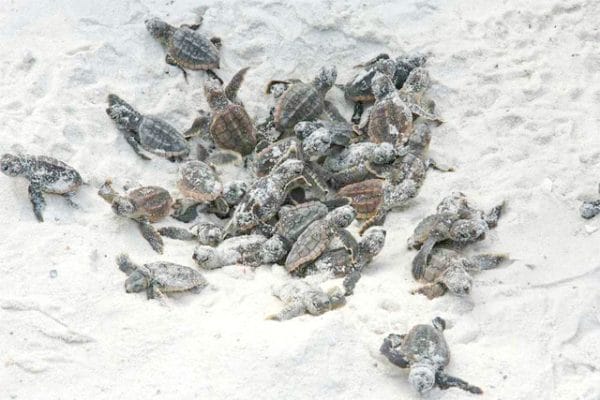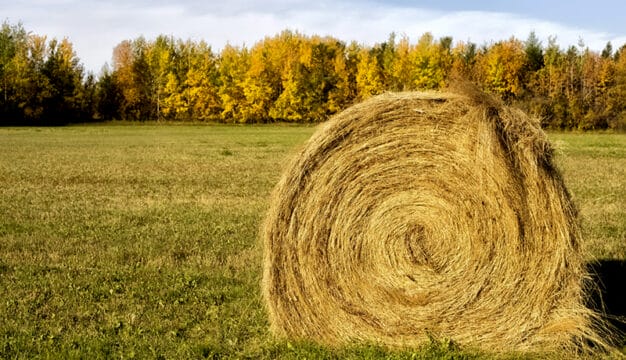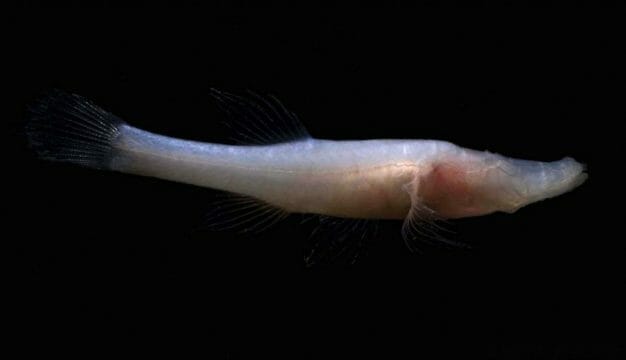Loggerhead Sea Turtle
 Loggerhead Sea Turtle
The loggerhead sea turtle (Caretta caretta) is found globally within temperate and subtropical waters. Though the loggerhead sea turtle is the most common species of sea turtle found in Alabama, it is threatened by extinction in the state and throughout its habitat. These turtles nest seasonally along the shoreline of Alabama (Baldwin and Mobile Counties) and can also be found foraging off Alabama in the northeastern Gulf of Mexico.
Loggerhead Sea Turtle
The loggerhead sea turtle (Caretta caretta) is found globally within temperate and subtropical waters. Though the loggerhead sea turtle is the most common species of sea turtle found in Alabama, it is threatened by extinction in the state and throughout its habitat. These turtles nest seasonally along the shoreline of Alabama (Baldwin and Mobile Counties) and can also be found foraging off Alabama in the northeastern Gulf of Mexico.
Adult loggerhead sea turtles weigh between 220-400 pounds (90-180 kilograms) and are generally 35-42 inches (80-106 centimeters) long, measured by the carapace (upper shell). Adults range in color from light brown to red along the top (dorsal) shell and body. They are off-white to yellow on the bottom (ventral) shell (plastron) and body. Loggerhead sea turtles are named for their wide head and strong jaws. These powerful jaws are used for crushing food items such as crabs, horseshoe crabs, and mollusks, as well as various invertebrates.
Loggerhead sea turtles nest on Alabama beaches, from the Florida border to Dauphin Island. The majority of nesting occurs between Fort Morgan and Gulf Shores, between April and August. Hatchlings emerge from their nests after the eggs have incubated for 50-65 days. Females can lay an average of 115 eggs per nest and lay an average of five sets of eggs during the season. Female loggerheads return to nesting beaches close to where the female herself hatched. Loggerhead sea turtles leave a distinct track when they come ashore, and this is often helpful for biologists when several turtle species nest on the same beach. Female loggerhead sea turtles come ashore individually, usually at night, to dig nests for their eggs and prefer beaches with vegetation along the dunes and very little light and activity. Turtles may at any point prior to actually depositing eggs halt their efforts at creating a nest if they are disturbed and return to the water. Once a nesting female begins depositing eggs, however, she will continue until she has completed the nest.
In most animals, sex chromosomes (which carry genes) determine whether an individual is male or female, but in some reptiles, including sea turtles, sex is determined by the temperature of the sand during incubation. Warmer temperatures result in more females and cooler temperatures in more males. There is some variability of temperature within the nest and over the nesting period, so most nests produce at least some of each sex.
 Loggerhead Sea Turtle Hatchlings
Once hatchlings leave the nest, they must make their way into the ocean surf and out to open water. The hatchlings will move with currents and floating sargassum (a type of seaweed found floating at the surface), surviving off floating invertebrates. Subadult loggerheads will return to near-shore waters to forage once they have grown to a size substantial enough to evade most predators. Loggerheads will become mature adults at approximately 65 years of age. At that time, females may migrate thousands of miles from foraging grounds to nesting beaches.
Loggerhead Sea Turtle Hatchlings
Once hatchlings leave the nest, they must make their way into the ocean surf and out to open water. The hatchlings will move with currents and floating sargassum (a type of seaweed found floating at the surface), surviving off floating invertebrates. Subadult loggerheads will return to near-shore waters to forage once they have grown to a size substantial enough to evade most predators. Loggerheads will become mature adults at approximately 65 years of age. At that time, females may migrate thousands of miles from foraging grounds to nesting beaches.
Loggerhead sea turtles are considered at risk of extinction throughout their global range. The National Oceanic and Atmospheric Administration estimates that the global numbers of loggerhead sea turtles have decreased by approximately 47 percent within the last 50 years. The Center for Biological Diversity estimates there are approximately 50,000 loggerhead sea turtles worldwide. Within Alabama, sea turtle nest numbers varied from 235 nests in 2016 to 72 nests in 2018. The International Union for the Conservation of Nature’s Red List describes the loggerhead sea turtle as “vulnerable” to extinction. The trade in loggerhead sea turtles and their parts is prohibited by the Convention on International Trade in Endangered Species of Fauna and Flora (CITES). Within the United States, loggerhead sea turtles are considered threatened and protected by the Endangered Species Act overseen by the U.S. Fish and Wildlife Service. Within Alabama, loggerhead sea turtles are rare and considered one of the species of highest conservation concern, therefore making them a priority in research and conservation efforts within the state. Loggerhead sea turtles are considered a nongame species within Alabama, further protecting them from hunting.
Natural threats to sea turtles include raccoons, feral hogs, and Atlantic ghost crabs (Geukensia demissa), all of which consume turtle eggs. Some predators, such as ghost crabs, and various species of fish (including sharks) may also consume hatchlings or smaller juveniles. As sea turtles increase in size, the numbers of predators decrease significantly, as the turtles become too large to swallow.
Aside from natural threats, loggerhead sea turtles face many threats from human activities. Fishing activities are a leading threat posed by humans. Loggerhead sea turtles are at risk for capture in gill nets, trawls, crab pots, and longlines, for example. Starting in the late 1980s, high sea turtle deaths from commercial shrimp trawling led to shrimp boats being required to acquire and use a Turtle Exclude Device (TED), which allowed sea turtles to escape the trawl while containing most of the shrimp. This device helped to increase the number of nesting females. Loggerhead sea turtles and fisheries also compete for certain food animals such as blue crabs (Callinectes sapidus) and horseshoe crabs (Limulus polyphemus). When humans gather too many of these, loggerheads in that area may go hungry. Loggerheads are also often injured or killed when they are struck by boats or their propellers.
Another human-imposed threat is beach development, which decreases the amount of nesting sites and increases light pollution in areas where beach is still available. Anthropogenic (or artificial) lighting can draw hatchlings in the wrong direction, where they may die in roads or dunes or parking lots. Buildings may also block sunlight and decrease the temperature of the sand, which can increase incubation periods and/or alter the sexes of the sea turtles that hatch from the nest.
Plastic pollution is also a human-imposed threat. Plastic bags and balloons may be mistaken for food and the sea turtle may eat it and die as a result. Plastics can also be barriers for nesting, sometimes trapping females as they make their way along the beach. Floating fishing gear, whether plastic or not, may entangle loggerheads and cause drowning and shell deformation. Fertilizers and other substances that end up in the oceans can spur the growth of substances such as algae that may release toxins into the water. The toxins may affect the loggerhead sea turtle through the food it eats.
Climate change (the global and/or regional change in climate attributed to the amount of carbon dioxide in the atmosphere) is another threat to loggerhead sea turtles. Changes in weather patterns, such as an increase in hurricanes, may destroy nests on beaches. Increased temperatures have the potential to change the amount of female and male sea turtles that hatch from nests. Climate change can even affect the currents of the ocean which may affect the amount of food available for sea turtles.
Further Reading
- Dodd, Kenneth J. “Synopsis on the Biological Data of the Loggerhead Sea Turtle (Caretta caretta) (Linnaeus 1758).” Washington D.C.: U.S. Department of the Interior, National Biological Service, 1988.
- Ware, Mathew, and Mariana M. P. B. Fuentes. “Leave No Trace Ordinances for Coastal Species Management: Influences on Sea Turtle Nesting Success.” Endangered Species Research 41 (February 2020): 197-207.
- Wyneken, Jeanette, and Alexander Lolavar. “Loggerhead Sea Turtle Environmental Sex Determination: Implications of Moisture and Temperature for Climate Change Based Predictions for Species Survival.” Journal of Experimental Zoology Part B: Molecular and Developmental Evolution 324 (July 2015): 465-465.



